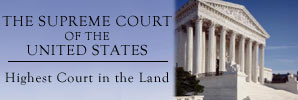|
|
|
 |
|
|
U.S.
Society > Crime and Justice |
|
Despite the respect of most Americans for law and the determination of the legal system to protect the rights of individuals, the United States, like all other countries, does experience crime. But crime has been going down in the United States since the 90s. In New York, Fort Worth and other cities, police are cracking down on quality-of-life offenses like public drinking and aggressive panhandling and claiming credit for the big drops in violent crime that follow. Violent crime rates have been declining steadily since 1994, reaching the lowest level ever recorded in 2005. According to the Bureau of Justice Statistics National Crime Victimization Survey (NCVS), from 1993 through 2004, the violent crime rate fell 57 percent and the property crime rate declined by 50 percent. A high percentage of crime in the United States is directly related to the illegal sale and use of drugs. Drugs are smuggled into the country by organized groups of criminals despite intense efforts by the government to stop the illegal drug trade. Those who become addicted to drug use sometimes rob or break into houses or stores to get the money to pay for the drugs.
Drug abuse has caused great concern in the United States. The federal government has worked hard to stop the growing of opium poppies, of coca plants and of cannabis (source of marijuana and hashish) in other nations. It has also set up special agencies, sometime working with agencies from other nations, to catch the smugglers outside and inside the United States. Teachers and many other citizens work together to teach children about the dangers of drug use. Many government agencies in the states and private citizen groups work to help drug addicts give up their drugs use and turn to useful lives. Concern about crime has also led to special
government programs and special programs of private citizen groups to
stop crime and to help prisoners lead useful lives after their prison
sentences end. See also: |
||||
| Feature Article | ||||
Anatomy
of a Jury
Community-based
Groups Combat Crime in American Cities By
Burton Bollag. The
Supreme Court and the United States |
||||
Texts
are abridged from U.S. State Department IIP
publications and other U.S. government materials. |
||||
| What
kind of information materials are available?
CD: These documents are available in fulltext format on the About the USA CD-ROM. Teachers: Request a copy for classroom use. L: Selected documents are available in German as well as other languages, including Arabic, Chinese, French, Spanish, Persian and Turkish. |
DISCLAIMER
Any reference obtained from this server to a specific commercial product, process, or service does not constitute or imply an endorsement by the United States Government of the product, process, or service, or its producer or provider. The views and opinions expressed in any referenced document do not necessarily state or reflect those of the United States Government. |
 U.S. Diplomatic Mission to Germany /Public Affairs/ Information Resource Centers Updated: August 2009 |


 Anatomy
of a Jury Trial
Anatomy
of a Jury Trial  The
ultimate interpreter of American law and the American Constitution itself
is the United States Supreme Court. Nearly 220 years old, the Court
has grown dramatically in stature and authority. Its authority to invalidate
as unconstitutional actions of the legislative and executive branches
now is long settled. Americans may disagree with the Court's decisions,
but defying the Court is simply beyond the bounds of political, even
social, legitimacy. eJournal presents a collection of essays that explain
how the Court functions. and how it commands the respect of Americans
and plays a vital role in the constitutional system. (eJournal, April
2005)
The
ultimate interpreter of American law and the American Constitution itself
is the United States Supreme Court. Nearly 220 years old, the Court
has grown dramatically in stature and authority. Its authority to invalidate
as unconstitutional actions of the legislative and executive branches
now is long settled. Americans may disagree with the Court's decisions,
but defying the Court is simply beyond the bounds of political, even
social, legitimacy. eJournal presents a collection of essays that explain
how the Court functions. and how it commands the respect of Americans
and plays a vital role in the constitutional system. (eJournal, April
2005)